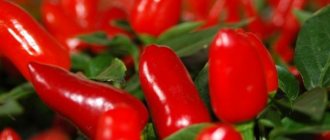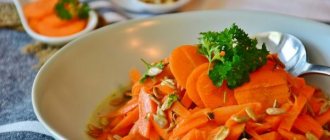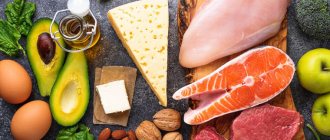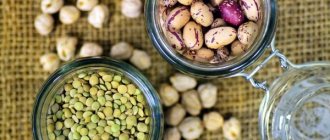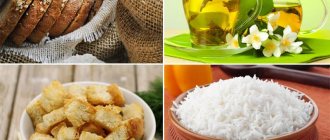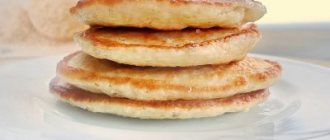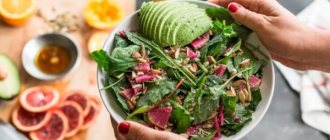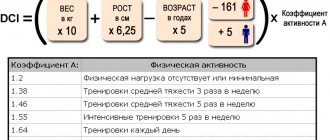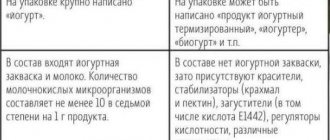Japanese diet, despite its name, has nothing to do with Japan. It is impossible to find the author of the diet; there are a dozen different versions floating around on the Internet. However, this menu has long proven its effectiveness: some people lost money on it up to 8 kg in one week.
The essence of the Japanese diet is to follow a low-calorie menu for 1-2 weeks. Products are selected in such a way as to dull the feeling of hunger: proteins in meat and fish satiate well, voluminous vegetable salads also quickly contribute to satiety.
Interestingly, some suggest eating with chopsticks, studying Japanese literature and listening to national music of Japan during strict weight loss. There is a certain meaning in this - a person eats with chopsticks slower than with a spoon. Accordingly, saturation occurs faster, so you definitely won’t want to go for more!
What is the Japanese diet?
- Diet duration: 14 days;
- Specifics: strict low-calorie protein diet,
- Approximate cost of the diet: budget (about 2 thousand rubles for 2 weeks);
- Results of the Japanese diet: weight loss by 5-8 kg;
- Recommended frequency: no more than 2 times a year;
- The main advantage of the diet: maintaining the results for a long time (provided you exit the diet correctly).
How to get out of a diet
When a person adheres to the Japanese diet, his stomach decreases in size and adapts to digesting low-calorie foods. When leaving the diet, you can make your menu more varied, but in general follow the same rules: eat 3 times a day in small portions, do not snack on flour and fast food, choose foods with high energy value and low calorie content. For example, it is better to give preference to cereals, lean meats, vegetables and fruits. Don't rush with sweets. If the cravings are too strong, you can try taking Herbalife Yellow Pills. They contain chromium and garcinia cambogia, which reduce the need for sweets, help control appetite and stimulate the fat burning process. If it’s difficult to do without a snack, you can take kefir or muesli. Salt and sugar should be used to a minimum. Ideally, quitting a diet should last as long as the diet itself.
Japanese diet for 14 days: what to expect?
Don’t expect much variety in the menu - all foods allowed on the Japanese diet for 14 days are very familiar to Russians. This is an undoubted advantage, since the risk of allergic reactions to exotic foods is minimal, and the recommended foods for meals can be bought in any, even the smallest supermarket.
It is not known exactly why this diet for weight loss was called Japanese. According to one version, it was developed in a certain Tokyo clinic, according to another, the name was inspired by an easy, simple and clear diet plan, following which gives an inspiring effect (similar to the Japanese way, right? Follow the rules, try your best, and you will receive a reward) .
In addition, the Japanese 14-day diet, which has become widespread among those losing weight around the world, is distinguished by moderation in both the composition and calorie content of the recommended foods, and this also connects it with the traditional Japanese eating style.
Nutritionist Naomi Moriyama from Japan believes that the secret of youth and long life expectancy of her fellow countrymen lies in small portion sizes and a diet containing a small amount of carbohydrates.
Why is the diet called “Japanese”?
Surely a person who hears the phrase “Japanese diet” for the first time immediately imagines a menu with an emphasis on rice, soy sauce, seafood and other favorite dishes of this eastern country. In fact, the only thing that will remind you of Japan on the menu will be boiled fish and, possibly, boiled eggs. The diet does not involve any delights or exotics. All products are well known to Russians, which is a definite advantage of such a diet, since the risk of developing an allergic reaction is minimized. In addition, all products are freely available and are not expensive at all, so there will be no problems finding ingredients for cooking.
It’s difficult to say why the diet is called Japanese.
There are two versions of the origin of the name of the diet:
- There is an assumption that the menu was compiled by nutritionists from a clinic in Tokyo.
- According to another version, the diet is called Japanese because of the clear and simple scheme of its use. By adhering to the basic rules of dietary nutrition, a person will definitely get the desired result. This is very similar to the Japanese philosophy: give your best and you will be rewarded.
It is also known that the Japanese are very reserved when it comes to food. They eat food in small portions, each of which consists of low-calorie foods. This is the principle that forms the basis of the diet. The famous Japanese nutritionist Naomi Moriyama believes that it is the moderate consumption of food by her compatriots that allows them to break all longevity records.
Naomi conducted a comparative analysis, as a result of which it was possible to establish that the Japanese consume on average 25% fewer kilocalories per day than residents of other countries. Butter, chocolate, chips and baked goods are not popular in the Land of the Rising Sun. We can say that moderation in food is one of the features of culture. The same distinctive feature is inherent in the Japanese diet.
Japanese diet rules
However, moderation is, unfortunately, unusual for many Russian residents, and reducing calories can become a real problem. Moreover, the Japanese diet for weight loss involves really strict restrictions.
Protein
Moreover, the main component that supplies the body with energy in the Japanese diet is protein, obtained from chicken eggs, poultry, lean meat, fish and dairy products. Carbohydrates can be obtained from some of the permitted vegetables, fats can be obtained from vegetable oils, which can be used for cooking and salad dressing, as well as those contained in meat and fish.
Cellulose
Vegetables and fruits are rich in fiber, the amount of which on some days of the Japanese diet is not particularly regulated, so the gastrointestinal tract can fully cope with its work.
Beverages
Coffee and green tea invigorate and contain healthy antioxidants (so it is better to choose high quality tea and coffee, natural, without artificial additives).
Drinking regime is very important on any diet, and Japanese is no exception. During the day, drink large amounts of clean, still water at room temperature to both help your stomach feel full and speed up the elimination of processed animal proteins from your body.
Authorized Products
It is advisable to include the following in the menu:
- sea and river fish;
- fermented milk and low-fat dairy products: cottage cheese, Greek yogurt, kefir;
- chicken and quail eggs;
- lean meats: chicken, turkey, lean pork and beef;
- fresh fruits with low sugar content (bananas and grapes should be excluded);
- fresh vegetables with low starch content;
- olive oil in small quantities;
- unsweetened drinks: tea, coffee.
You can create your own menu from these products if there are any restrictions, for example, individual intolerance or allergies to a specific product.
Warnings
As can be noted, the Japanese diet contains all the essential nutrients, but with serious restrictions on composition and quantity. Therefore, this diet cannot be considered balanced and cannot be followed for more than 14 days so as not to harm your health.
Be careful because in the first days of the diet, your body may react differently to reducing the amount of carbohydrates in your diet: you may experience body aches, weakness, dizziness and headache. If you have such symptoms, do not torture yourself and your body, quit the diet and be sure to get examined by a doctor!
The main way to achieve the desired result on the Japanese diet within 14 days is to strictly follow its plan.
It is forbidden to change days and consume non-recommended products at will. The only exception is morning coffee - it can be replaced with a cup of green tea without sugar. You should avoid salt for the entire duration of the diet, but if this prohibition causes discomfort for your taste buds, then add minimal salt to your food.
Since the Japanese diet for 14 days is quite strict, before starting it you should prepare your body and prepare yourself psychologically. By giving up sweets and fast food, reduce your usual portion size. At the end of the diet, you will receive your reward for your work - in 14 days the Japanese diet allows you to get rid of 5 extra pounds.
The essence of the diet
All weight loss programs can be divided into 5 main types: express diets, mono-diets, protein or carbohydrate diets, balanced (non-strict) and low-calorie diets. The Japanese diet can be classified as the latter.
Despite the fact that, according to the Japanese food system, you can consume no more than 1200 kcal per day, the right menu allows you to feel full almost the whole day.
But this is far from the only advantage of this program.
Benefits of the Japanese diet:
- symptoms such as hunger, dizziness, nausea, headache are not clearly expressed;
- affordable products;
- The 3 meals a day diet fits perfectly into the work day;
- tangible result;
- the result is guaranteed to last for several months after stopping the diet, as the stomach will shrink and the body will get used to fewer calories;
- the list of permitted products is limited, but you can prepare such a variety of dishes from them that they will not be repeated for 2 weeks.
Japanese diet for 14 days: the principle of losing weight
The essence of the Japanese diet is expressed in a few words: low-calorie, protein, minimal amount of salt. Accordingly, thanks to these three main foundations, the process of losing weight starts:
- Protein is able to enhance heat production, which accelerates metabolism, promoting weight loss;
- Due to the restriction of salt in the diet, excess fluid is removed from the tissues, swelling is eliminated, and blood pressure is normalized;
- A small amount of calories enters the body. Therefore, he has to activate his own reserves;
- The body spends a lot of energy on the absorption of protein products, which entails fat burning.
The diet is suitable for people of any weight category. If you need to lose 3-4 kg, it will be enough to follow a diet for 7 days. If you need to lose weight from 5 kg or more, then you will have to adhere to the Japanese diet for 14 days.
If there are no contraindications and you feel excellent, you can stretch it out for a month, since, in addition to proteins, it still contains fats (vegetable oil) and carbohydrates (rice).
Japanese and “chemical” diets for diabetics: what do they have in common?
If we draw analogies between the Japanese diet and other diets for weight loss, then it is as close as possible to a “chemical” diet. The latter was proposed by the American doctor Osama Hamdiy and is intended for the treatment of obesity in people with diabetes.
The Japanese diet also involves a sharp limitation of carbohydrate foods, but at the same time an increase in protein foods in the menu. This allows you to trigger certain chemical reactions in the body that are aimed at burning fat. In this case, no new deposits appear.
However, Osama Hamdiy’s diet is different in that the amount of food eaten is not limited to any portions. At the same time, someone losing weight can exercise, but he will not feel exhausted. In turn, the Japanese diet involves eating fairly monotonous food, but it is not very long. 14 days is enough to reduce your clothing size by about 2 points.
Japanese diet for 14 days, important points
The most effective diet for fast weight loss is the Japanese diet. Only the Dukan diet , but they have a difference in duration: if the Japanese diet lasts only two weeks, then the Dukan diet will last for months when all its stages are completed.
Read about the Dukan diet here
Origin of the diet
Opinions differ regarding the history of the Japanese diet. Some believe that it was created by employees of the Jaecks beauty clinic in Japan. Others claim that the authorship belongs to ordinary Asian girls. They are famous for their love for all kinds of diets. There is even a version that it was not invented in Japan, but in Russia. And it is named so that those who want to lose weight will aspire to be as graceful as Japanese women. In any case, two-week Asian-style weight loss is gaining more and more fans around the world.
Japanese diet for 14 days: main principles of dietary nutrition
The Japanese diet was developed about 16 years ago, during which time many people who wanted to lose weight appreciated its effectiveness. The Japanese diet implies a salt-free diet with a significant reduction in carbohydrates.
A characteristic feature of the diet is three meals a day and plenty of liquid. This diet is suitable for people aged 18 to 40 years and is not gender specific, that is, the diet is suitable for both men and women.
The basic rules for using the Japanese diet are:
- It is necessary to monitor the consumption of large amounts of clean water;
- Fish can be eaten not only boiled;
- There are no restrictions on the use of cereals, in most cases rice, legumes;
- Eating cabbage and other vegetables is allowed;
- It is strictly forbidden to consume simple carbohydrates for 14 days;
- When preparing dishes, you must use only recommended products;
- It is acceptable to drink morning coffee without sugar;
- It is forbidden to switch days of the diet: on the fifth day you must eat only those dishes that are prescribed for that day;
- When preparing dishes, the priority remains lean beef, although it is acceptable to use skinless chicken.
“Japanese” is based on reducing daily calories and giving up carbohydrates, especially fast ones. Dietary nutrition involves avoiding salt, fatty, and smoked foods. Products such as alcohol, juices, soda and any fast food are also contraindicated during the diet.
Strict adherence to these tips leads to an acceleration of metabolism, as a result of which excess fat deposits are burned and converted into energy. The Japanese diet belongs to the class of protein diets. The basis of nutrition is chicken eggs, rabbit and chicken meat, fish and some dairy products.
Of carbohydrates, only some vegetables are allowed to be consumed in small quantities. A prerequisite is the normalization of water balance; in addition to the fact that those losing weight need to drink at least 2 liters of clean water, the menu must also include green tea, coffee or chicory.
Basic principles of proper nutrition:
- Individual choice of Japanese diet: for 7 and 14 days. If you have a small amount of excess weight, it is enough to stick to the diet for 7 days. If you are overweight, it is better to follow the Japanese diet for 14 days; reviews show that in the first case, weight loss is about 6 kilograms, in the second - up to 10 kilograms;
- Strict adherence to the diet: the proposed products cannot be replaced with alternative ones. You can only use tomato juice instead of tomatoes, white cabbage instead of spinach;
- Strict absence of sugar: all refined carbohydrates, sweet foods, baked goods and flour products, honey are strictly prohibited;
- A gradual entry and exit from the Japanese diet is required. Results are less noticeable in those who switch to this diet from another diet. And they are clearly visible if the preliminary nutrition was not dietary. If you have a full diet on the eve of the “Japanese” meal, you should arrange a fasting day (kefir or apple) or at least make a light dinner (some boiled brown rice with a salad of fresh vegetables). When leaving, you should introduce everyday foods gradually, about 1 per week;
- Mandatory lack of salt: the salt-free Japanese diet is aimed at removing excess fluid from the body, due to which up to 30% of excess weight is lost;
- Prohibition of exceeding deadlines. It is strictly forbidden to continue dietary nutrition for more than 14 days due to the danger to the body;
- A sufficient amount of fluid is necessary: during the day you should drink 2 liters of still water. Tea (you can drink green) and coffee are not included in this volume;
- Strict adherence to consistency: the Japanese diet, the menu of which is designed with the goal of gradual weight loss and long-term preservation of the result, does not tolerate changes in the proposed diet. You cannot rearrange the days and menus for breakfast, lunch, and dinner.
Advantages and disadvantages
The Japanese diet for weight loss is a rather radical way to get rid of unwanted pounds. The key to successful weight loss is the absence of stress. If the body does not experience a negative state, the person does not perceive the new lifestyle as a punishment, then weight loss proceeds smoothly and effectively. A well-designed method should promote smooth, gradual weight loss without harm to health. The same cannot be said about the Japanese diet. It will allow you to lose a certain amount of kilograms, but maintaining the results will not be easy. Usually, after restrictions are lifted, people develop a craving for prohibited products, which is almost impossible to overcome. This is how the body and subconscious cope with stress and try to fill all the resulting deficits.
Rapid weight loss, lack of hunger due to the abundance of protein foods, a budget menu of affordable products - these are, perhaps, all the advantages of the Japanese diet. There are more disadvantages:
- Short duration of effect. Failure to follow a special diet after leaving the diet will lead to a rapid return of kilograms. The body, deprived of nutrients, will require them in even greater quantities, so it will not be easy to refuse it.
- Not every person is able to withstand all the restrictions on the Japanese diet. Only people with enormous willpower are able to endure all the restrictions and complete the two-week course.
- An unbalanced diet, a deficiency of vitamins, minerals, and nutrients can lead to deterioration of the condition of the skin, hair, and nails.
- An abundance of protein foods, insufficient amounts of fiber, and plant fibers can cause problems with the gastrointestinal tract: constipation, flatulence.
If you stick to this diet for a long time, it can lead to serious liver and kidney disease, and dehydration. In addition, there is a list of contraindications - diseases for which the use of the Japanese diet is not recommended, even prohibited:
- During pregnancy and breastfeeding;
- diseases of the gastrointestinal tract: dysbacteriosis, chronic pancreatitis, irritable bowel syndrome, colitis;
- liver diseases: autoimmune and viral hepatitis, hemangioma, diffuse changes, fatty disease, fibrosis, cirrhosis, liver failure;
- kidney diseases: acute and chronic pyelonephritis, autoimmune kidney disease, the presence of stones, polycystic disease;
- Protein increases blood clotting and increases the risk of blood clots. Therefore, it is not recommended to adhere to the Japanese diet for older people, as well as for those who are very overweight or significantly exceed the norm for their body mass index.
Doctors warn: “Japanese” can cause constipation, nausea, dizziness, loss of strength, the appearance of an unpleasant odor of acetone from the mouth, swelling, and if it lasts for more than two weeks it will lead to brittle nails, hair loss, changes in complexion, drowsiness, decreased reaction, concentration , perseverance. Why torture your own body like that?
Advantages and disadvantages of the Japanese diet for 14 days
Pros of the Japanese diet:
- The risk of cardiovascular diseases is reduced (also due to reducing salt in the diet);
- Lasting results if you exit the diet correctly (i.e. you will not gain back the lost kilograms);
- Availability of products listed on the menu—no exotic items;
- Minimal salt consumption reduces swelling;
- Protein products will not allow the skin to stretch and sag after losing weight;
- You can use different methods of preparing dishes: not only steaming, stewing or boiling - you can even fry them, without excluding vegetable oil from the diet;
- Plant foods replenish the body with essential vitamins and microelements;
- Significant weight loss.
Disadvantages of the Japanese diet:
- Three meals a day without snacks does not correspond to the principles of healthy weight loss, when meals are split, up to 5-6 times a day;
- Many contraindications;
- The frequency of use of the diet is only once every 6 months;
- The small average daily calorie intake is only 800 kcal, which is not enough for those who are accustomed to physical and mental activity;
- Possible dehydration;
- Every morning you have to start with a cup of black coffee on an empty stomach, which not every heart and stomach can handle;
- The wrong way out of the diet is fraught with rapid weight gain;
- The diet is not entirely balanced, since there is a significant bias towards proteins at the expense of carbohydrates and fats;
- Because of this diet, by the end of the diet, many begin to experience dizziness, decreased performance, drowsiness and weakness.
A small daily number of meals (only 3 instead of 5-6 healthy) and a lack of snacks may not be easy on the Japanese diet, so be prepared for this. It is recommended to have dinner at least 2 hours before bedtime, and start the morning with a glass of water - this stimulates metabolism and allows you to better tolerate the absence of breakfast.
Contraindications
The Japanese diet also has its contraindications, which are not recommended to be ignored. Do not use the diet for children!
You cannot test your body if you have:
- Any metabolic disease: obesity, diabetes (see diet 9 for type 2 diabetes), white muscle Keshan disease, metabolic arthritis-periarthritis (gout), hydroxypathic and pyrophosphate arthropathy, acaptonuria and ochrontotic arthropathy, osteoarthritis and rheumatism, metabolic and autoimmune disease liver: chronic hepatitis, primary biliary cirrhosis and primary sclerosing cholangitis, liver tumors, helminthiases: trematodes and echinococcosis, hereditary metabolic diseases and vitamin deficiency.
- Endocrine changes (puberty, pregnancy, lactation, menopause, after abortion).
- Severe kidney diseases (pyelonephritis and glomerulonephritis), liver (cholecystitis, hepatitis and cholelithiasis - it is better to adhere to a diet for liver diseases), heart and vascular diseases (hypertension and hypotension, coronary artery disease, vegetative-vascular dystonia).
- Any manifestation of gastritis, including the remission phase of chronic gastritis (here it is better to use a diet for gastritis).
- Physical activity and hard work.
Interesting articles: 6 petals diet: menu, results and reviews of those losing weight Buckwheat diet - menu, reviews and results
List of staple foods for the Japanese diet for 14 days
- Fresh chicken eggs - 2 dozen;
- Chicken fillet - 1 kg;
- Fresh carrots - 2-3 kg;
- Tomato juice - 1 l.;
- High-quality coffee beans or ground - 1 pack;
- White cabbage - 2 medium sized forks;
- Fruits (except bananas and grapes) - 1 kg. total;
- Selected lemons - 2 pcs.;
- Sea fish fillet - 2 kg;
- Zucchini, eggplant - 1 kg. total;
- Kefir - 1 l. (buy fresh, don’t store for future use!);
- Lean beef, pulp - 1 kg;
- Extra virgin olive oil - 500 ml;
- Green tea of your favorite variety (without additives or flavorings) - 1 pack.
Products
| Allowed | Prohibited |
|
|
Japanese salt-free diet for 14 days: list of allowed foods
Dishes consisting of fish or animal meat with a side dish of vegetables are quite popular and many people eat them every day. It is psychologically difficult for people to give up spices, especially salt, and various sweets in the form of baked goods, confectionery and sweets.
Forcing yourself to forget about sweets and treats for a week or two is a problem. It would be useful, before starting a diet, many people should cleanse their body and temporarily switch to proper nutrition without salt.
Read about fasting days here
Allowed products for weight loss in the “Japanese” diet:
- Rusks from dark bread;
- Kefir or yogurt, preferably homemade natural;
- It is advisable to consume tomato juice, homemade or purchased with pulp. Regular packaged juice contains salt, which is prohibited;
- Hard low-fat cheese;
- Natural coffe;
- Sea fish, beef, chicken, boiled or steamed;
- Chicken or quail eggs, raw or boiled (hard-boiled);
- Zucchini, eggplant, parsnip root fried in oil;
- Unsweetened fruits, most often apples, pears, citrus fruits;
- Green tea without additives or flavorings;
- Mineral or purified water without gas;
- Lemon, the juice of which can be added to dishes to improve the taste;
- Vegetable oil – olive or unrefined sunflower;
- Fruits: cherries, apples, kiwi, citrus fruits, pear, plum;
- Fresh vegetables: cabbage and carrots, raw and boiled. You can eat it whole, in pieces, chopped or grated.
Products and spices that are not included in this list are considered prohibited. Fruits such as grapes and bananas are also prohibited.
Drinks prohibited are lemonade, juice, soda, and alcohol of any strength. A categorical taboo on various sauces, spices, marinades.
Japanese diet menu
Products that are prohibited
List:
- Sparkling waters. Light cola is also prohibited - it contains no less calories than regular soda;
- Smoked meats;
- Hot sauces;
- Sweets. No sugar;
- Bread, vermicelli;
- Drinks containing alcohol.
Remember, Japanese is based on a low amount of calories. Most high-calorie foods are excluded from the diet during weight loss. And to get results, meals take place according to a schedule. Snacking between meals is prohibited. And if you have a strong feeling of hunger, then drink water or green tea.
Japanese diet for 14 days: menu
The Japanese diet 14 days menu for every day and the scheme is currently popular in Russia. It attracts people due to its low cost, while the duration of the diet is only 2 weeks.
A noticeable result after a period of time, which persists after proper cessation of the diet. Unfortunately, you will have to be patient to complete the two-week diet, but it will be worth it.
1 day Japanese diet
- Breakfast: coffee without sugar and milk.
- Lunch: 2 boiled eggs, boiled cabbage with vegetable oil and a glass of tomato juice.
- Dinner: 200 g of boiled or fried fish.
Day 2 of the Japanese diet
- Breakfast: a piece of rye bread and coffee without sugar.
- Lunch: 200 g of boiled or fried fish with boiled cabbage and vegetable oil.
- Dinner: 100 g of boiled beef and a glass of kefir.
Day 3 of the Japanese diet
- Breakfast: a piece of rye bread, toasted in a toaster, or unleavened biscuits without additives, coffee without sugar.
- Lunch: zucchini or eggplant, fried in vegetable oil, in any quantity.
- Dinner: 200 g of unsalted boiled beef, raw cabbage in vegetable oil and 2 boiled eggs.
Day 4 of the Japanese diet
- Breakfast: a small fresh carrot with the juice of one lemon.
- Lunch: 200 g of boiled or fried fish and a glass of tomato juice.
- Dinner: 200 g of any fruit.
Day 5 of the Japanese diet
- Breakfast: a small fresh carrot with the juice of one lemon.
- Lunch: boiled fish and a glass of tomato juice.
- Dinner: 200 g of any fruit.
Day 6 of the Japanese diet
- Breakfast: coffee without sugar.
- Lunch: 500 g unsalted boiled chicken with fresh cabbage and carrot salad in vegetable oil.
- Dinner: small fresh carrots and 2 boiled eggs.
Day 7 of the Japanese diet
- Breakfast: green tea.
- Lunch: 200 g unsalted boiled beef.
- Dinner: 200 g of fruit or 200 g of boiled or fried fish or 2 eggs with fresh carrots in vegetable oil or boiled beef and 1 glass of kefir.
Day 8 of the Japanese diet
- Breakfast: coffee without sugar.
- Lunch: 500 g of boiled chicken without salt and carrot and cabbage salad in vegetable oil.
- Dinner: fresh small carrots with vegetable oil and 2 boiled eggs.
Day 9 of the Japanese diet
- Breakfast: medium carrot with lemon juice.
- Lunch: 200 g of boiled or fried fish and a glass of tomato juice.
- Dinner: 200 g of any fruit.
Day 10 of the Japanese diet
- Breakfast: coffee without sugar.
- Lunch: 50 g of cheese, 3 small carrots in vegetable oil and 1 boiled egg.
- Dinner: 200 g of any fruit.
Day 11 of the Japanese diet
- Breakfast: coffee without sugar and a slice of rye bread.
- Lunch: zucchini or eggplant, fried in vegetable oil, in any quantity.
- Dinner: 200 g of boiled beef without salt, 2 boiled eggs and fresh cabbage in vegetable oil.
Day 12 of the Japanese diet
- Breakfast: coffee without sugar and a slice of rye bread.
- Lunch: 200 g of boiled or fried fish with fresh cabbage in vegetable oil.
- Dinner: 100 g of boiled unsalted beef and a glass of kefir.
Day 13 of the Japanese diet
- Breakfast: coffee without sugar.
- Lunch: 2 boiled eggs, boiled cabbage in vegetable oil and a glass of tomato juice.
- Dinner: 200 g of boiled or fried fish in vegetable oil.
Day 14 of the Japanese diet
- Breakfast: coffee without sugar.
- Lunch: boiled or fried fish 200 g, fresh cabbage with olive oil.
- Dinner: 200 g of boiled beef, a glass of kefir.
Let's prepare ourselves for the diet
Tune in to how beautiful, slim and light you will be in just 13 days and have a light dinner the day before.
For example, boil yourself a small portion (150 grams) of wild or brown rice and prepare a portion of about 100-150 grams of a light vegetable salad of radishes, cucumbers and Chinese cabbage or cucumbers, tomatoes and sweet peppers. Season the salad with a drop of vinegar, a drop of olive oil and try to do without salt.
If you absolutely cannot live without salt, we recommend at least reducing its amount; after all, the evening before the diet is not the diet itself.
| Diet salad recipes |
A technique like Chinese chopsticks works great. Buy Chinese chopsticks in advance and try eating with them. Such a small thing, but it already begins to have a beneficial effect on your consciousness, and you become imbued with the importance of the upcoming diet. Perhaps, having already taken the sticks in your hand, you will feel like a light bird.
Quitting the Japanese Diet
The first week of leaving the Japanese diet is a very important period. At this time, the body continues to lose weight and adapt to new conditions, so it is important not to pounce on food, but to slowly introduce familiar foods into the diet. They must be exclusively natural.
In order for the achieved result to be consolidated, you should exit the diet gradually. The exit period should last twice as long.
So, the period of exit from the 14-day Japanese diet should last at least 28 days - that is, 4 weeks:
- Eat small meals (5-6 times a day);
- For breakfast, eat porridge cooked in water (buckwheat, oatmeal, rice) and omelettes. Your single serving should be about 200 g;
- Replace a fruit dinner with a full meal of vegetables and proteins (for example, 200 g of vegetable stew and a steamed chicken cutlet);
- You should add salt to your food gradually: at the beginning of your trip, consume no more than 5 g of salt per day;
- Do not reduce the amount of protein foods;
- During the day you need to make 2-3 snacks from fermented milk products and fruits;
- In the first week, gradually increase the consumed portions of meat and fish dishes - by 50 g, vegetables - by 100 g.
Exit rules
- Get ready for a gradual exit from the diet: it is believed that the exit from this diet should exceed the duration of the diet itself.
- Eat small portions: do not stretch your stomach - due to modest nutrition during the diet, it has shrunk, this will prevent you from gaining weight back.
- Continue to follow the key rules of the Japanese diet: eat plenty of vegetables, lean meat. You can introduce cereals like rice or buckwheat into your diet in small portions.
- Do not start your diet with desserts and baked goods - you risk losing weight, but the kilograms will only add. Add your favorite foods gradually, in small portions.
Drink at least 1.5-2 liters of water, this rule should be followed throughout your life!
Sample menu for quitting the Japanese diet for 2 weeks
Day 1-3 of leaving the Japanese diet
- Breakfast: omelet of 2 eggs and 150 ml. milk (2.5% fat), 1 loaf of bread, black coffee.
- Lunch: 200 g of boiled beef or 200 g of baked cod, 100 g of fresh vegetables.
- Dinner: 100 g of cottage cheese (5% fat) or 250 ml. kefir (2.5% fat) and 1 apple.
Day 4-6 of leaving the Japanese diet
- Breakfast: 200 g of oatmeal with water (without sugar and butter).
- Snack: 1 orange, 1 kiwi.
- Lunch: 200 g baked chicken breast, 100 g fresh vegetables (cabbage, carrots, peppers).
- Dinner: 200 g of boiled shrimp or 150 g of cottage cheese (7% fat), 1 cucumber.
Day 7-10 of leaving the Japanese diet
- Breakfast: 200 g of oatmeal in water without sugar and butter, 2 pieces of toast (20 g each).
- Snack: 1 any fruit.
- Lunch: 200 g vegetable soup, 100 g boiled beef.
- Snack: 100 g of natural yogurt.
- Dinner: 200 g baked chicken breast, 150 g any steamed vegetables.
Day 11-14 of leaving the Japanese diet
- Breakfast: 200 g of any porridge with nuts, dried fruits and honey (no more than 1 teaspoon), 2 pieces of toast (20 g each).
- Snack: 1 any fruit, 100 g of natural yogurt or cottage cheese (5% fat).
- Lunch: 200 g of any soup with low-fat chicken broth, 150 g of boiled chicken breast, 2 fresh cucumbers.
- Snack: 1 any fruit or 150 g of natural yogurt.
- Dinner: 200 g boiled mussels, 150 g vegetable stew;
- Snack: 200 ml. kefir (2.5% fat).
List of prohibited products
The list of products that need to be excluded is much longer than those allowed. However, do not be upset, because you can gradually return to them after the diet. True, without excessive use.
What is not allowed in Japanese?
- alcohol, carbonated drinks;
- fruits with high sugar content;
- fatty, salty, smoked foods;
- other vegetables;
— milk and fermented milk products with a high percentage of fat content and flavoring additives;
— sweet products;
- seasonings, salt.
Basic rules of the Japanese diet
Main recommendations for following the Japanese weight loss method:
- Follow the menu strictly, do not change products. Do not minimize the number of ingredients indicated on the menu, and also avoid breaks and deviations from it;
- Smoothly exit the restricted diet, try not to immediately return to harmful foods;
- While losing weight, drink enough clean, gas-free water at room temperature. Water will give you a feeling of fullness and ensure the removal of toxins and harmful substances;
- Eat no later than 2 hours before bedtime;
- After waking up on an empty stomach, drink 200 ml. water to improve metabolism;
- If you don’t like most of the allowed foods, refrain from the diet;
- If you experience weakness, migraines, or body aches, immediately stop following this diet.
Rules
The Japanese diet for 14 days has an original version and a slightly modified one, adapted to the life of a modern person, designed for 7 or 13 days. In the second case, to reduce the load on the kidneys, fasting days are carried out with the addition of carbohydrates to the diet. But regardless of the type, the rules remain the same:
- It is recommended to stick to the prepared menu and not exceed the established portion sizes. It is not advisable to swap meals or replace one food with another.
- Complete refusal of sugar and salt.
- It is necessary to strictly observe the drinking regime, drink at least 1.5-2 liters of clean drinking water without gas. This is necessary to remove protein breakdown products and normalize kidney function.
- You should eat strictly in accordance with the scheme and schedule. Snacks are prohibited.
- The last meal should be taken 3-4 hours before going to bed.
- It is better to exclude intense training on the Japanese diet, since it requires carbohydrates. As an option, you can stick to leisurely stretching and non-strength yoga.
- It’s not easy for the body during a diet; it experiences enormous stress and overload. It is necessary to help him, give him rest. The best way to do this is to improve your sleep patterns.
- You need to exit the diet smoothly and consistently. Otherwise, all the lost kilograms will return, even in large quantities.
Throughout the diet, you need to carefully monitor your well-being. Any malaise, weakness, or headache may indicate serious disorders in the body. The Japanese diet should be abandoned immediately. Why test the body's strength if by now doctors at weight loss clinics have a huge number of tools for safe, effective weight loss without stress, breakdowns, or side effects?
Recipes for delicious Japanese diet dishes
To make the diet as easy as possible, we suggest you use these recipes for simple and tasty dishes that will allow you to endure this weight loss marathon to the bitter end. Do not forget that you must completely avoid salt.
Recipe 1. Baked fish
This dish is suitable for any diet.
Ingredients:
- Cod fillet - 300 g;
- Zucchini - 100 g;
- Soy sauce - 50 ml.
How to cook:
- Cut the fillet into fairly large pieces;
- Marinate in sauce for 3 hours;
- Cut the zucchini into slices. Leave for half an hour, drain the juice;
- Place the fish in the sleeve, and the zucchini on top of it;
- Pour in the remaining marinade;
- Tie the sleeve, make several punctures in it;
- Bake for half an hour in an oven preheated to 180°C. Ready!
Recipe 2. Boiled cabbage salad
This salad is a staple in the Japanese diet.
Ingredients:
- White cabbage - 200 g;
- Canned green peas - 30 g;
- Vegetable oil - 30 ml;
- Parsley - to taste;
- Dill - to taste.
How to cook:
- Boil cabbage leaves until soft (30 minutes);
- Cool them down;
- Chop into fine strips;
- Stir in butter, peas and chopped herbs. Ready!
Recipe 3. Diet soup
The soup recipe is ideal for salt-free or rice options.
Ingredients:
- Pollock fillet - 300 g;
- Water - 1.5 l.;
- Egg - 1 pc.;
- Onion - 1 pc.;
- Sea cabbage - 150 g;
- Soy sauce - 50 ml;
- Rice - 100 g.
How to cook:
- Chop the onion and marinate in the sauce for 3 hours;
- Boil the rice until half cooked, add fish, cut into pieces, and cook until done;
- Chop the seaweed and add to the soup;
- Place the pickled onions in the same place, but without the marinade;
- Slowly pour the beaten egg into the soup in a thin stream, stirring constantly;
- Remove from heat immediately;
- Can be served both cold and hot. Ready!
The Japanese diet allows frying foods as a method of cooking, but we selected these recipes because steamed, boiled and stewed dishes will contribute to even faster weight loss.
Japanese dinner. In the evening, the Japanese can eat dishes such as rice with furikake (dried mixture), seaweed, red fish, miso soup, salad, steamed vegetables, and green tea.
Advantages, disadvantages and contraindications of the classic version
The classic “Japanese” diet is a protein diet with a small addition of vegetables. Its advantage is that with such nutrition it is theoretically impossible to remain hungry, since allowed proteins give a feeling of fullness. Vegetables and cheese are included in the diet to provide the body with a physiological minimum of carbohydrates and fats. “Japanese” is a low-carb system.
“Japanese”, despite its name, has nothing to do with the traditional Japanese style of nutrition, which is characterized by small portions and the avoidance of fatty meat, but at the same time provides carbohydrates in the form of rice (it is customary not to boil it, but to soak it in water ). Japanese cuisine even has desserts based on certain types of legumes. They are not very sweet and contain few calories.
Many people believe that proper weight loss is a low-calorie diet designed for 7-14 days. From this point of view, the “Japanese” system is an ideal system. Fat tissue is actually lost during this time. The problem is that its sudden loss is fraught with disruption of hormone production. Therefore, the diet is contraindicated during pregnancy.
Taking into account the fact that such a diet does not include breakfast and is based on strict restrictions, it is not recommended for people with chronic diseases of the gastrointestinal tract and liver.
Preparing vegetables and fruits
Raw and boiled vegetables quickly become boring. Just like raw fruits. Therefore, I want to share with you simple recipes for preparing these products.
Raw and baked apples with cinnamon
This dish can be eaten for breakfast. Still, it's better than one cup of coffee. Cinnamon gives energy and, most importantly, stimulates brain function. Fresh apples can be cut into slices and sprinkled with cinnamon. You can cook them in the oven or use a microwave oven. For information on how to do this, read the article “how to bake apples in the microwave.”
Cauliflower puree with tomatoes
Eating boiled white cabbage all the time is not easy. I suggest diversifying the menu with this delicious dish. You can try it on the first day of the diet. Boil the cauliflower and grind in a blender. You can add spices, except salt, and a little fresh dill. Place the puree on a plate. Cut the tomato and place into slices, and also cut two boiled eggs into slices.
Here's a complete diet lunch for you. Bon appetit!
Chinese diet options
In addition to ready-made menus for every day, there are other types of diets. For example, rice, on Chinese cabbage, warm.
Rice diet
The rice diet is extreme, so it is used when you quickly need to lose extra pounds. Using it, you can get rid of up to 5 kg in 3 days. It is best to buy brown rice. It is able to quickly improve the functioning of internal organs, as well as cleanse the body of toxins.
There are two diet options:
- The first is to consume only brown rice soaked the day before and boiled for 10 minutes throughout the day.
- The second is to diversify portions of rice with other products: cabbage;
- carrots;
- boiled fish;
- citrus fruits;
- asparagus;
- celery;
- greens.
Daily calorie intake is 1000.
Chinese cabbage diet
Chinese cabbage is a negative calorie food. The body spends more energy on its digestion than it receives in the end. That is why it is considered a popular assistant in any diet.
The option with Chinese cabbage has 3 varieties:
- The first is to consume 500 g of boiled chicken fillet and Chinese cabbage in unlimited form during the day. Duration - no more than 5 days.
- Second - within 2 weeks you need to replace dinner with cabbage salad, and reduce the portions by 1.5 times. With this scheme, you can lose up to 5 kg of excess weight as a result.
- The third is a more strict option. Duration - 3 weeks: for breakfast, eat 2 eggs and Beijing salad;
- for lunch - Beijing salad and lean soup;
- for dinner - boiled chicken fillet and cabbage salad;
- two snacks - an apple or low-fat cottage cheese.
Warm Chinese diet
The diet plan consists of eating only warm food. For example, fruit juices should be diluted 1:2 with warm water, and vegetables should be eaten in the form of pureed soups. Thanks to these principles, you can quickly improve the functioning of the gastrointestinal tract, as well as activate metabolic processes.
All permitted products are allowed to be consumed. The daily diet should not exceed 1000 kcal.
Reviews from beginners and experienced “weight losers”
To be honest, the before and after photos are impressive: the girls before and after the diet look like different people. But not every review has such photos attached...
The diet helped these people
Reviews from satisfied “weight losers” note that:
- they really lost weight, and impressively quickly (even weight that had been at a “dead point” for many years can go away);
- among other things, on this diet the tummy is beautifully tightened;
- subsequently weight is not gained;
- This is the “miracle” diet that is recommended to girlfriends and colleagues.
In order not to lose a positive mood on a diet, people manage to make even such a limited diet a “delicacy”: they add cinnamon to coffee (the seasoning makes the drink a little sweeter), instead of tomato juice, they prepare a salad from these vegetables with cabbage (this makes it more fun), beef is boiled with roots (onions, carrots, celery) and spices, making it aromatic and appetizing...
...And these people were unhappy
If you don’t take vitamins, during the diet (add here the “meager” monthly output), problems with hair, nails and even sleep may begin.
The diet is suitable only for people with an iron will. In fact, you will have to lose weight and limit yourself for almost 2 months. During this time, you can’t even look at a bun, a chocolate bar, or a pork cutlet. And sit with friends in a cafe over just “empty” coffee! What if they suddenly invite you to a wedding?
Finally, if you are on your feet from morning to night, you may experience dizziness and weakness while on a diet.
PS “Twin sister”: the diet of the “Japanese girl” is reminiscent of the French one. Same proteins, tiny portions, three meals and coffee for breakfast. How do these diets differ? The answer is here:
Water diet, how to drink water to lose weight.
Top 7 best drugs for weight loss
| Name | Price |
| Black Latte for weight loss | 99 rub. |
| NATURAL Fit Calorie Blocker Powder | 990 rub. |
| Purple tea "Chang-Shu" | 499 rub. |
| Fat burning drops “Honey Spas” | 1980 rub. 99 rub. (until 11/12/2020) |
| Detox cocktail for weight loss | 147 rub. |
| Lipocarnit for weight loss | 990 rub. |
| Reduslim weight loss product | 149 rub. |
Views: 1,673
The effectiveness of the Japanese method
Before you start healing your body and losing weight, you need to learn about the features of this method. The article Get the most from the Japanese diet talks about them in detail. Why do many people choose Japanese? There are several reasons, firstly, the weight goes away quickly, secondly, the long-lasting effect and minimal costs for the menu.
The Japanese protein diet menu for 14 days includes:
- chicken;
- eggs;
- fish;
- tomato juice, tea, coffee;
- cabbage, carrots, zucchini;
- low sugar fruits.
Grapes and bananas are strictly prohibited.
The exclusion of grapes is associated with a high glucose content, and bananas with a large amount of carbohydrates. These products are not available to everyone and even help reduce food costs.
Weight loss occurs precisely due to the absence of glucose, excessive fats and simple carbohydrates - the so-called extra calories. Thus, fish contains only complex fats necessary for the normal functioning of the body. They will not affect the figure, but their absence can lead to gastrointestinal disorders. The absence of fats and salt helps reduce cholesterol levels, get rid of waste and toxins.
On Chinese cabbage
One of the most effective diets. Beijing (Chinese) cabbage contains only 14 kcal. To digest it, the body needs more energy than it ultimately gives. This property of the product is called negative calorie content. It is thanks to him that cabbage is an indispensable component in the menu of people who want to lose weight.
There are three options for such a diet:
- weight loss occurs quickly, but is difficult for the body, because the daily diet consists of only 500 g of boiled chicken breast and an unlimited amount of Chinese cabbage in any form. The maximum duration of the diet is seven days, since the menu is very unbalanced;
- This is a good option for those who want to lose some weight, but are not ready to go on a diet. You don’t really need to change your eating habits, just replace dinner with Chinese cabbage salad, reduce your salt and sugar intake. They say that if you follow this regimen, you can lose up to 6 kg in a month;
- The goal of this option is not to lose weight, but to improve metabolism. To do this, stick to the same diet every day for 2-4 weeks. Breakfast – two boiled eggs with cabbage; lunch – low-fat soup and salad; dinner - boiled lean beef or chicken breast with cabbage. As a snack, you can eat an apple, low-fat unsweetened cottage cheese or kefir.
How to cook fish
Fish is best boiled or baked in the oven. You can simmer without oil. So the dish turns out to be dietary. If you are using a steamer, place the fish in foil. This way it will be better saturated with herbs and spices. When cooking, all the juices will be retained inside, and it will turn out juicy.
Braised tilapia
This recipe is suitable for those who do not have a double boiler. Take 2 pieces of tilapia. I like it because it has no bones and can be found in any supermarket.
Fill a deep frying pan halfway with water. Place the fish pieces, cover with a lid and start simmering. After 10-15 minutes, throw a couple of bay leaves into the frying pan. 3-4 peppercorns, you can add fish seasoning. Simmer the fish until cooked. Instead of salt, you can sprinkle the finished tilapia with lemon juice.
Trout in the oven
For variety, the fish can be baked in foil. This trout recipe turns out very tasty. We will need:
- small trout;
- a few slices of lemon;
- pepper and fish spices to taste;
- a couple of sprigs of parsley.
The trout should be washed and the insides removed. Dry well and rub with spices. Then squeeze the juice from a lemon wedge and pour over the fish. The remaining lemon should be placed on top of the trout. You can put chopped parsley in the belly of the fish.
The oven should be turned on in advance and the temperature should be set to 190 degrees. It is very important to secure the edges of the foil so that the juice does not leak out of the fish. Baking time is about 30 minutes.
Crucian carp in the oven with seasonings and a drop of oil
A very tasty dietary dish can be made from crucian carp. To do this, take a couple of small fish. Lemon, garlic clove. And also fresh herbs and just a little vegetable oil.
The fish must be gutted and scales removed. Squeeze out a clove of garlic and rub it on the fish. You can cook without garlic, but simply season the crucian carp with spices. Stuff the bellies of the crucian carp with fresh herbs. Make vertical cuts on the fish carcass.
Lightly brush the crucian carp with vegetable oil and wrap in foil. Bake at 180 degrees oven for up to 40 minutes. If you want a golden crust, open the foil 5-10 minutes before it’s ready.

